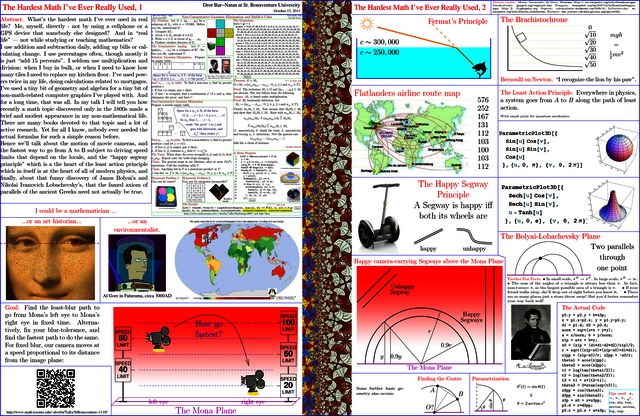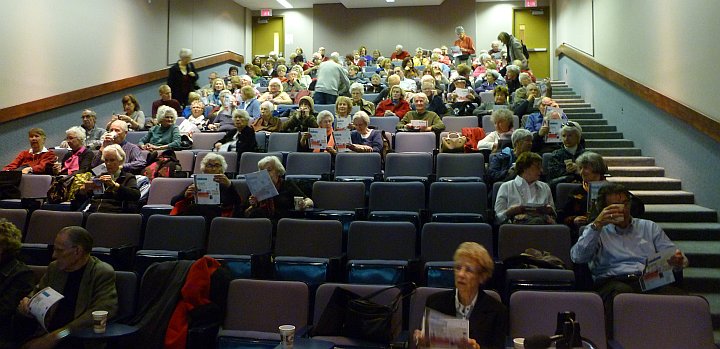 Video of
a similar talk, given in February 2011.
Video of
a similar talk, given in February 2011.
Abstract. What's the hardest math I've ever used in real life? Me, myself, directly - not by using a cellphone or a GPS device that somebody else designed? And in "real life" - not while studying or teaching mathematics?I use addition and subtraction daily, adding up bills or calculating change. I use percentages often, though mostly it is just "add 15 percents". I seldom use multiplication and division: when I buy in bulk, or when I need to know how many tiles I need to replace my kitchen floor. I've used powers twice in my life, doing calculations related to mortgages. I've used a tiny bit of geometry and algebra for a tiny bit of non-math-related computer graphics I've played with. And for a long time, that was all. In my talk I will tell you how recently a math topic discovered only in the 1800s made a brief and modest appearance in my non-mathematical life. There are many books devoted to that topic and a lot of active research. Yet for all I know, nobody ever needed the actual formulas for such a simple reason before.
Hence we'll talk about the motion of movie cameras, and the fastest way to go from A to B subject to driving speed limits that depend on the locale, and the "happy segway principle" which is a the heart of the least action principle which in itself is at the heart of all of modern physics, and finally, about that funny discovery of Janos Bolyai's and Nikolai Ivanovich Lobachevsky's, that the famed axiom of parallels of the ancient Greeks need not actually be true.
 Video of
a similar talk, given in February 2011.
Video of
a similar talk, given in February 2011.
Handout of St. Bonaventure: hardest.html, hardest.pdf, hardest.png (source files: hardest.zip, pensieve: 2011-02, 2011-10).

Tom Lehrer's YouTube video on Lobachevsky is at http://www.youtube.com/watch?v=RNC-aj76zI4.
